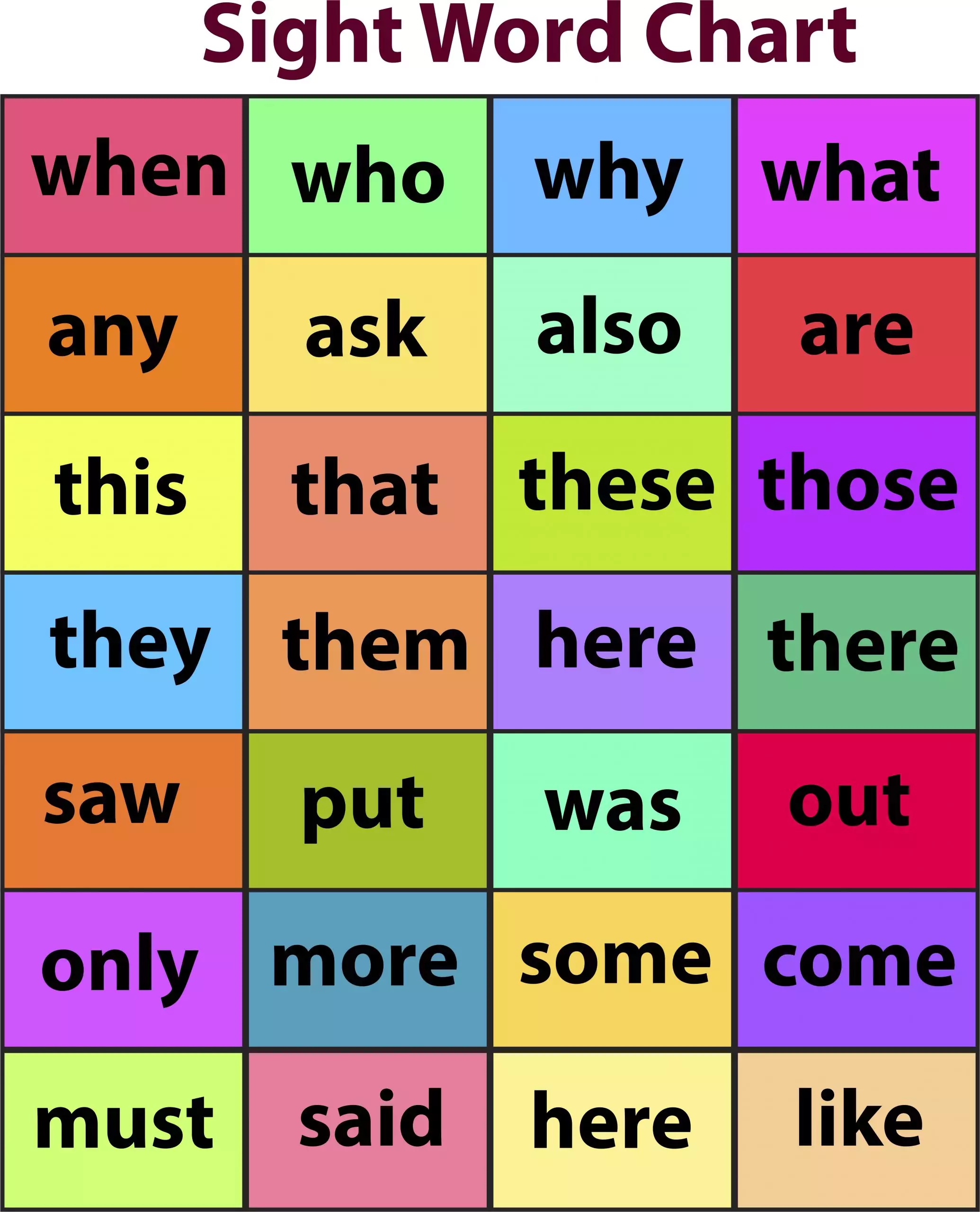The Ultimate Guide for Parents on Sight Words: Unlocking Your Child’s Reading Potential
Hello there, super parents!
Are you ready to dive into the magical world of reading with your little one? Well, buckle up, because we’re about to embark on a delightful journey to discover sight words—the secret ingredient to giving your child a head start in their reading adventure!
Sight words, often called high-frequency words, are those that appear most commonly in our language. They’re the words that pop up again and again in books, magazines, and all sorts of reading materials. Here’s the kicker – sight words don’t always follow the usual phonetic rules, which can make them tricky for budding readers to decode.
But why, you ask, are sight words so important? The answer is simple and brilliant! By familiarizing your child with these common words, you’re helping them to quickly recognize and process them without hesitation. This not only speeds up their reading but also boosts their confidence, making the whole learning experience more enjoyable and less frustrating.
What Are Sight Words?
Before we leap into activities and strategies, let’s clear the air on what exactly we’re talking about. Sight words are words that your child should ideally recognize “on sight,” without having to sound them out. These words often don’t have a visual representation and can be abstract, like “the,” “and,” “it,” or “you.”
There are several lists that educators utilize, but the two most popular ones are the Dolch sight words list and the Fry word list. The Dolch list was created by Dr. Edward William Dolch in 1936 and includes 220 words, which are predominantly ‘service words’ (pronouns, adjectives, conjunctions, prepositions, verbs, and adverbs) and 95 high-frequency nouns. The Fry word list, developed by Dr. Edward Fry in 1957, is more expansive, with 1,000 words that cover about 90% of words found in an average book, newspaper, or website.
Why Sight Words Matter
Imagine trying to figure out a complex puzzle without having all the necessary pieces—it’s daunting! That’s what reading can feel like for children who haven’t mastered sight words. These words provide the glue that holds sentences together, giving context and meaning to stories and information. By knowing sight words by heart, children can focus on understanding content rather than getting bogged down by decoding every single word.
Studies have repeatedly shown that knowledge of sight words in early schooling is a powerful predictor of future reading success. So, if you’re wondering whether to take the plunge into the world of sight words with your child—you definitely should!
How to Teach Sight Words
Teaching sight words can be as fun as it is essential. And the best part? It doesn’t have to be monotonous repetition. Engage your kids with lively and interactive approaches like games, art, technology, and other hands-on methods that we will explore right here in this guide. Stay tuned, because we’ll delve into the most effective and joyous ways to teach sight words that ensure learning is not a chore, but a fun part of every day!
This is just the beginning, and we’re so excited to walk you through each step of introducing sight words to your child. Together, we’ll explore everything from how to recognize when your child is ready for sight words to creative activities and games for practice.
So parents, let’s get those little ones on the path to fluent reading with ease and cheer!

5 Things Parents Should Know in Preparing for Sight Words
1. Understanding Readiness and Timing
Every child is unique, and so is their timing for learning sight words. It usually coincides with a growing interest in letters, words, and reading in general. Typically, this occurs in the pre-kindergarten to first grade years, but there’s no strict timetable. Look for signs of curiosity about books or when your child starts asking about specific words – these are hints that they might be ready to start the sight word voyage.
2. Selection of Sight Words
Start with foundational sight words lists like Dolch or Fry, but don’t feel confined by them. If your child is showing interest in a word not listed, go ahead and teach it. Personalizing your sight word list to include words from their favorite book or ones related to their immediate environment can increase motivation and relevance.
3. Integrating Play and Learning
Kids learn best when they’re having fun. Sight word bingo, memory match games, or even a ‘treasure hunt’ to find sight words around the house can turn the learning process into an exciting game. The combination of play and education nurtures a deeper engagement with the words, as well as a positive attitude toward reading.
4. Consistency and Routine
A consistent routine can significantly help your child’s progress with sight words. Just a few minutes each day can be more beneficial than one long session once a week. Simple daily practices, such as reviewing a few words during breakfast or before bedtime, can seamlessly integrate learning into your child’s life.
5. Encouragement and Patience
A supportive environment is crucial for learning. Each child moves at their own pace, and patience will be your best friend through this journey. Celebrate every little success to keep their spirits high. Remember, the ultimate goal is to foster a love for reading – so encourage, praise, and be their reading cheerleader!
Having the foundational knowledge about preparing your child for sight words is just the start. Keep in mind that the journey of reading is a marathon, not a sprint, and both you and your child should enjoy every bit of it!
With this knowledge, you’re more than equipped to help your child embark on the wonderful path to literacy. Engaging with sight words will soon become a rewarding part of your daily routine, bringing countless moments of achievement and joy. So cherish these early steps—it’s a special time when you get to witness the blooming of a lifelong reader!
For more great fun click here. For more information see here
Disclaimer
The articles available via our website provide general information only and we strongly urge readers to exercise caution and conduct their own thorough research and fact-checking. The information presented should not be taken as absolute truth, and, to the maximum extent permitted by law, we will not be held liable for any inaccuracies or errors in the content. It is essential for individuals to independently verify and validate the information before making any decisions or taking any actions based on the articles.




